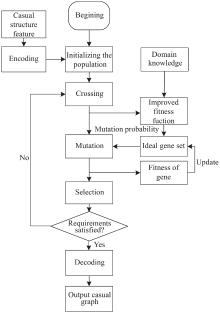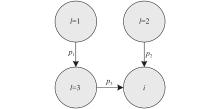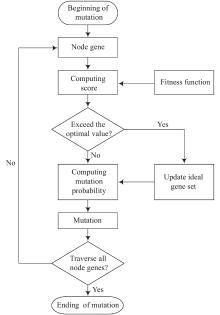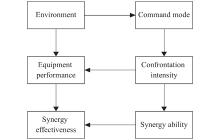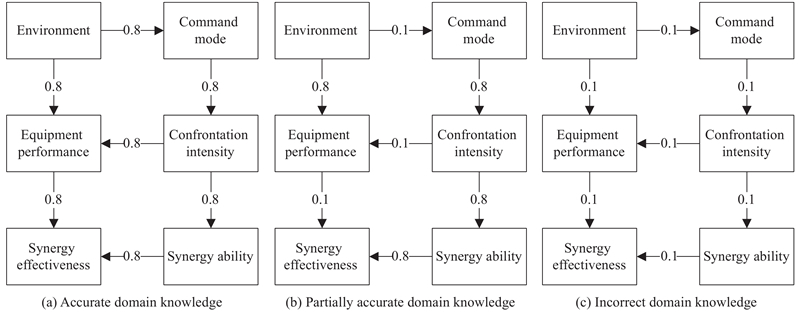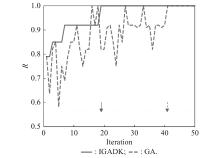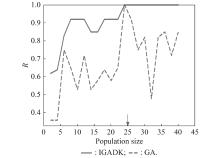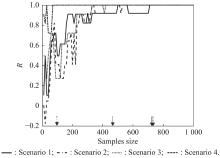| 1 |
PEARL J Causal diagrams for empirical research. Biometrika, 1995, 82 (4): 669- 688.
doi: 10.1093/biomet/82.4.669
|
| 2 |
TSIRLIS K, LAGANI V, TRIANTAFILLOU S, et al On scoring maximal ancestral graphs with the max-min hill climbing algorithm. International Journal of Approximate Reasoning, 2018, 102 (9): 74- 85.
|
| 3 |
ASLANI B, MOHEBBI S Ensemble framework for causality learning with heterogeneous directed acyclic graphs through the lens of optimization. Computers & Operations Research, 2023, 152 (8): 106- 148.
|
| 4 |
GUL H, AL-OBEIDAT F, AMIN A, et al Hill climbing-based efficient model for link prediction in undirected graphs. Mathematics, 2022, 10 (22): 4265.
doi: 10.3390/math10224265
|
| 5 |
ABREU RS D E, NUNES Y T, GUEDES L A, et al A method for detecting causal relationships between industrial alarm variables using transfer entropy and K2 algorithm. Journal of Process Control, 2021, 106, 142- 154.
doi: 10.1016/j.jprocont.2021.09.001
|
| 6 |
XIAO Y, WANG D Y, GAO Y A mobile Bayesian network structure learning method using genetic incremental K2 algorithm and random attribute order technology. Scientific Programming, 2021, (9): 52- 58.
|
| 7 |
HONG Y H, HAO Z F, MAI G Z, et al Causal discovery combining K2 with brain storm optimization algorithm. Molecules, 2018, 23 (7): 1729.
|
| 8 |
GIUDICE E, KUIPERS J, MOFFA G The dual PC algorithm for structure learning. Machine Learning, 2021, (7): 142- 151.
|
| 9 |
BISWAS R, MUKHERJEE S Consistent causal inference from time series with PC algorithm and its time-aware extension. Statistics and Computing, 2024, 34 (1): 217- 237.
|
| 10 |
BISWAS R, SHLIZERMAN E Statistical perspective on functional and causal neural connectomics: the time-aware PC algorithm. PLOS Computational Biology, 2022, 18 (11): e1010653.
doi: 10.1371/journal.pcbi.1010653
|
| 11 |
RUSSO F, TONI F Shapley-PC: constraint-based causal structure learning with shapley values. Machine Learning, 2024, 2, 1- 21.
|
| 12 |
POORANI M, NITHYA P, UMAMAHESHWARI B A method for mining infrequent causal associations with swarm intelligence optimization for finding adverse drug reaction. Semantic Scholar, 2014, 3 (1): 25- 32.
|
| 13 |
CAI R C, QIAO J, ZHANG K, et al. Causal discovery from discrete data using hidden compact representation. Proc. of the 32nd Conference on Neural Information Processing Systems, 2018: 2666−2674.
|
| 14 |
CHEN W, CAI R C, ZHANG K, et al Causal discovery in linear non-Gaussian acyclic model with multiple latent confounders. IEEE Trans. on Neural Networks and Learning Systems, 2022, 33 (7): 816- 2827.
|
| 15 |
CAI R C, ZHANG Z J, HAO Z F, et al. Sophisticated merging over random partitions: a scalable and robust causal discovery approach. IEEE Trans. on Neural Networks & Learning Systems, 2017, 29(99): 3623−3635.
|
| 16 |
XIE F, CAI R C, ZENG Y, et al An efficient entropy-based causal discovery method for linear structural equation models with IID noise variables. IEEE Trans. on Neural Networks and Learning Systems, 2020, 31 (5): 1667- 1680.
doi: 10.1109/TNNLS.2019.2921613
|
| 17 |
WANG Y T, XUE K, QIAN C. Evolutionary diversity optimization with clustering-based selection for reinforcement learning. Proc. of the International Conference on Learning Representations, 2022: 1−17.
|
| 18 |
BOGGI S, FANO W G Numerical response and causality study of the magnetic permeability-frequency function of NiZn ferrites using genetic algorithm. Journal of Magnetism and Magnetic Materials, 2020, 500, 166- 176.
|
| 19 |
MARICA V G, HOROBET A Conditional granger causality and genetic algorithms in VAR model selection. Symmetry, 2019, 11 (8): 100- 114.
|
| 20 |
MURARI A, ROSSI R, MICHELA G Combining neural computation and genetic programming for observational causality detection and causal modelling. Artificial Intelligence Review, 2022, 56 (7): 6365- 6401.
|
| 21 |
DENG O, NISHIMURA S, OGIHARA A, et al Evolutionary causal discovery with relative impact stratification for interpretable data analysis. Machine Learning, 2024, 4, 163- 181.
|
| 22 |
CHEN Z Y, LIU K, JIAO W P. A genetic algorithm for causal discovery based on structural causal model. Proc. of the Lecture Notes in Computer Science, 2022: 39−54.
|
| 23 |
CESAR B, JUAN V, GRACIELA R, et al Wiener-Granger causality theory supported by a genetic algorithm to characterize natural scenery. Electronics, 2019, 8 (7): 726- 741.
doi: 10.3390/electronics8070726
|
| 24 |
VAFAEE F. Learning the structure of large-scale Bayesian networks using genetic algorithm. Proc. of the Association for Computing Machinery, 2014: 855−862.
|
| 25 |
DAI J G, REN J, DU W C, et al An improved evolutionary approach-based hybrid algorithm for bayesian network structure learning in dynamic constrained search space. Neural Computing and Applications, 2018, 32 (5): 1413- 1434.
|
| 26 |
ORPHANOU K, THIERENS D, BOSMAN P. Learning Bayesian network structures with GOMEA. Proc. of the Association for Computing Machinery , 2018: 1007−1015.
|
| 27 |
ZHANG W J, FANG W, SUN J, et al. Learning bayesian networks structures with an effective knowledge-driven GA. Proc. of the IEEE Congress on Evolutionary Computation, 2020. DOI: 10.1109/CEC48606.2020.9185884.
|
| 28 |
CONTALDI C, VAFAEE F, NELSON P Bayesian network hybrid learning using an elite-guided genetic algorithm. Artificial Intelligence Review, 2018, 52 (1): 245- 272.
|
| 29 |
CONTALDI C, VAFAEE F, NELSON P. The role of crossover operator in Bayesian network structure learning performance. Proc. of the Genetic and Evolutionary Computation Conference, 2017: 768−776.
|
| 30 |
AMIRKHANI H, RAHMATI M, LUCAS P, et al Exploiting experts’ knowledge for structure learning of Bayesian networks. IEEE Trans. on Pattern Analysis and Machine Intelligence, 2017, 39 (11): 2154- 2170.
doi: 10.1109/TPAMI.2016.2636828
|
| 31 |
ZHU S Y, NG I, CHEN Z T. Causal discovery with reinforcement learning. Proc. of the International Conference on Learning Representations, 2020: 1−17.
|
| 32 |
YAO L Y, CHU Z X, LI S, et al A survey on causal inference. ACM Transactions on Knowledge Discovery from Data, 2021, 15 (5): 785- 796.
|
| 33 |
FELIPPE H, VIOL A, DE ARAUJO D B, et al The Von Neumann entropy for the pearson correlation matrix: a test of the entropic brain hypothesis. Physics, 2021, 20, 74- 81.
|
 ), Xianjin BU(
), Xianjin BU( ), Chunxiao CAI, Yue LU(
), Chunxiao CAI, Yue LU( ), Jing DU(
), Jing DU( )
)
